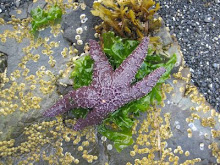"The Melon-headed Whale (Peponocephala electra; other names are many-toothed blackfish and electra dolphin) is a cetacean of the oceanic dolphin family (Delphinidae). It is closely related to the Pygmy Killer Whale and Pilot Whale, and collectively these dolphin species are known by the common name blackfish. The Melon-headed Whale is widespread throughout the world's tropical waters, although not often seen by humans on account of its preference for deep water.
Taxonomy
On account of its inaccessibility (most scientific data has come from mass strandings), this species is poorly understood. Until 1966 it was classified in the genusLagenorhynchus. Scientists then reclassified the creature into its own genus, Peponocephala.
Description
The Melon-headed Whale has a body shape rather like a torpedo - its head shaped like a rounded cone giving the animal its common name. The body is more or less uniformly light grey except for a dark grey face - sometimes called the "mask". The flippers are long and pointed. The dorsal fin is tall with a pointed tip - reminiscent of its cousin the Orca. When viewed in profile the head is not as rounded as the Pygmy Killer and this may be an aid to identification.
This whale is capable of swimming very quickly, particularly when startled. When doing so it often makes short low jumps clear of the sea surface, causing lots of splash. Melon-heads usually gather in large numbers (at least 100 and possible as many as 1000 on rare occasions) and sometimes strand together.
The Melon-head weighs about 10-15 kilograms (22-33 lb) at birth and is 1 meter (3 ft) long. An adult grows up to 3 meters (10 ft) long and weighs in excess of 200 kilograms (440 lb). The whales' lifespan is at least 20 years and probably more than 30 years for females.
Their primary diet is squid.
Population and distribution
The Melon-headed Whale lives well off-shore in all the world's tropical and sub-tropical oceans. At the northern fringes of its range it may also be found in the warm currents of temperate waters. For example, there has been the odd sighting off the southern coast of Ireland. Ordinarily, however, the Melon-head is found beyond the continental shelf between 20° S and 20° N. Hawaii and Cebu, in the Philippines, are good sites for seeing the whale as the continental shelf is narrow. Although no specific data exists, the species is unlikely to be migratory in common with animals in its subfamily."
Soon after spotting the Whales, they came right to the dive boat and started riding the bow wake. As the captain, I knew that it was my job to immediatly maintain course and speed for the safety of the whales. There were at least 100 whales in the vicinity of the vessel. The dive boat was a two-deck catamaran set up for recreational diving. On each side of the vessel there were dive ladders that hung down in the water for the divers to climb back on the vessel after their dive. We decided to let down the ladders, and then climb down with a mask on and view the whales.. There was another captain on board so I had him take the wheel so that I could take a look at the whales from under the water. The sea around Guam is crystal clear and in the area of the Blue Hole the visability can be up to 200 feet. I climbed down into the realm of the whales and had one of my most memorable experiences with whales. I can remember a group of three that came swimming up the side of the vessel and when they saw me I looked right into the eye of one of the whales. They wouldn't get closer than about 20 feet but to see a whale in the wild, under water at that proximity was unbelievable. It was so cool! Looking out in the distance, there were whales everywhere. We had an underwater photographer on board so he took the following photos.
As you can see it was an unforgettable day. Another time that the Melon-headed Whales visited us, the whales came upon us while we were sitting still in the water. I grabbed a mask and jumped in off of the bow as we were coasting to a stop. As I hit the water and the bubbles dissipated from entering the water, the whales immediately dove straight down until they were out of sight. It was weird seeing the whales verticle to the surface but when they are in the mid-depths, I suppose that horizontal is irrelevant. A few moments later, here they came - straight up. This was certainly one of the most incredible wildlife experiences of my life. The majesty of whales deepens my testimony of the the Savior's role as the Creator of the Earth and all things in it. Truly, Whales bear record of HIM.
This is a photo of me at the helm of the vessel that we saw the Melon-headed Whales from.
You can see the ladder on the side of the Boat.
Taxonomy





























